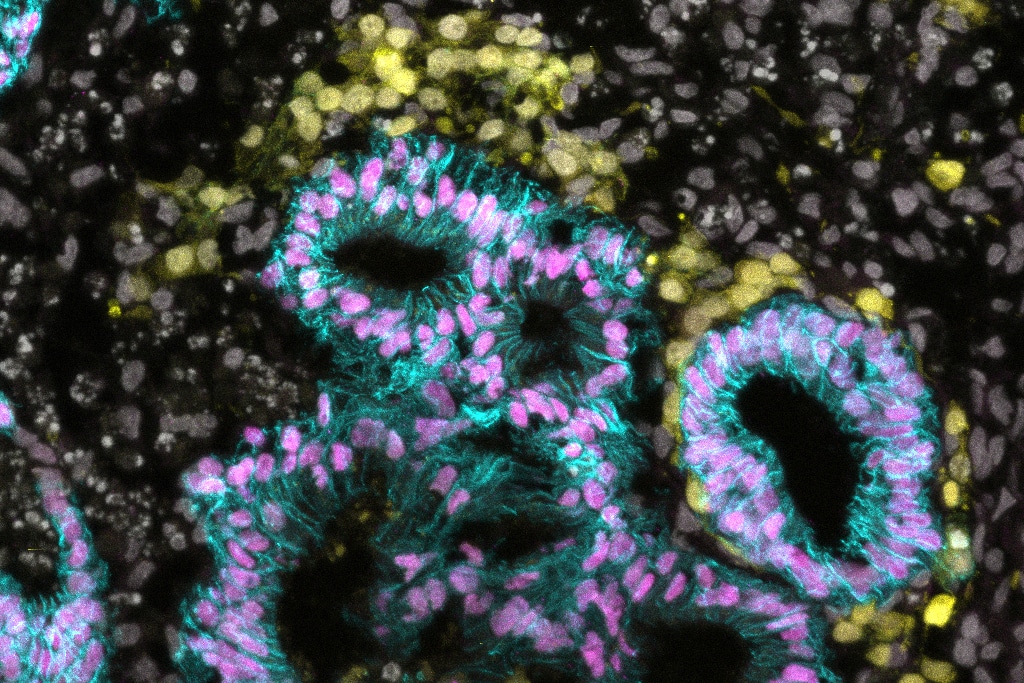Mitoballs, large mitochondrial clusters, form to sustain sperm development
August 14, 2023
Read more
A study from the Surani lab led by João Pedro Alves-Lopes re-defined the spectrum of human primordial germ cell-like cell precursors in vitro. The authors showed that primordial germ cell-like cells specified from precursors transitioning between primed and naïve pluripotency harbour an enhanced progression capability, which was supported by human hindgut organoids.
Alves-Lopes J.P. et al. (2023). Specification of human germ cell fate with enhanced progression capability supported by hindgut organoids. Cell Reports 42, 1. Published online January 5, 2023. DOI: 10.1016/j.celrep.2022.111907.

Human primordial germ cells (hPGCs), the precursors of sperm and eggs, are specified during weeks 2−3 after fertilization. Few studies on ex vivo and in vitro cultured human embryos reported plausible hPGCs on embryonic day (E) 12−13 and in an E16−17 gastrulating embryo. In vitro, hPGC-like cells (hPGCLCs) can be specified from the intermediary pluripotent stage or peri-gastrulation precursors. Here, we explore the broad spectrum of hPGCLC precursors and how different precursors impact hPGCLC development. We show that resetting precursors can give rise to hPGCLCs (rhPGCLCs) in response to BMP. Strikingly, rhPGCLCs co-cultured with human hindgut organoids progress at a pace reminiscent of in vivo hPGC development, unlike those derived from peri-gastrulation precursors. Moreover, rhPGCLC specification depends on both EOMES and TBXT, not just on EOMES as for peri-gastrulation hPGCLCs. Importantly, our study provides the foundation for developing efficient in vitro models of human gametogenesis.